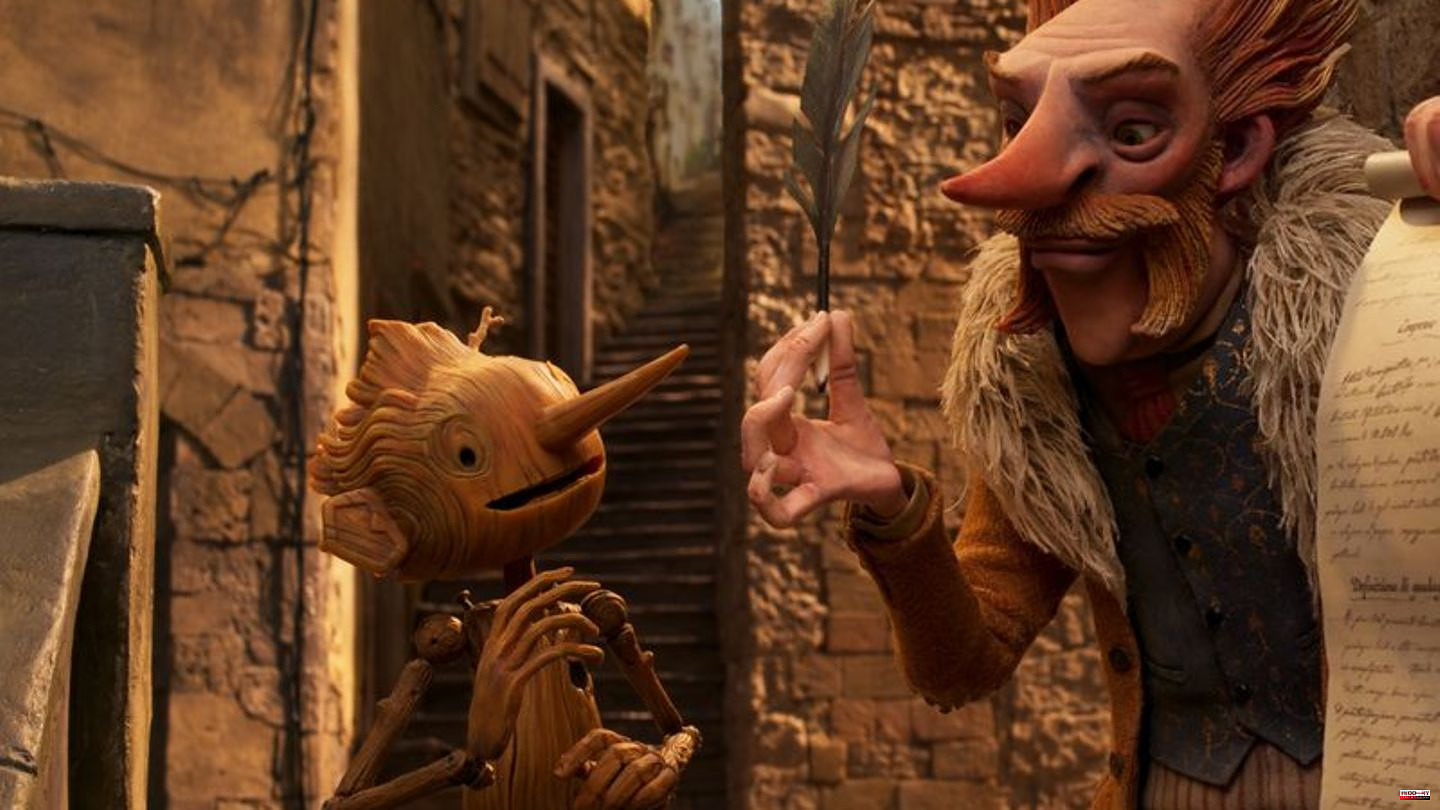Disney recently received scathing reviews for its digitally enhanced live-action adaptation of its in-house animated classic "Pinocchio". The next film about the famous human wooden puppet, whose adventures were first published in an Italian weekly about 140 years ago, is already coming. The successful Mexican director Guillermo del Toro ("Pan's Labyrinth", "Hellboy") staged "Pinocchio" as an emotional stop-motion film with great effort and attention to detail. It starts on Netflix on December 9th.
For the project, del Toro teamed up with animator Mark Gustafson, who also directed The Fantastic Mr. Fox with Wes Anderson. By the time Disney announced its Pinocchio remake, del Toro and co-director Gustafson were well underway with their production. "These things are not in our control," says del Toro in an interview with the German Press Agency in London. "We were also confident that our version of Pinocchio was so radically different from any other version ever made that there would be no overlap."
Slightly dark musical film
Guillermo del Toro's slightly dark musical film is closer to Carlo Collodi's story collection "The Adventures of Pinocchio" without being limited by it. The film is set in late 1920s fascist Italy by Prime Minister Benito Mussolini. There Master Geppetto falls into a serious crisis after his beloved son Carlo is killed by an aerial bomb. Intoxicated by alcohol, Geppetto cuts down a tree and carves a wooden puppet out of it. Thanks to the help of a good fairy, she comes to life overnight.
A cricket named Sebastian J. Cricket, self-proclaimed author and narrator of the story, is assigned to watch over the chaotic and rebellious Pinocchio with a clear conscience. But that's not so easy, because the malicious Count Volpe lures the wooden boy into his traveling circus. And then Pinocchio - who of course grows a long nose when he lies - is supposed to go to war for Mussolini with other child soldiers.
In the stop-motion film technique, individual static images are lined up. "It's an art form that's constantly on the brink of extinction and we wanted to keep it alive," says Oscar winner del Toro ("Shape Of Water"). But that took a lot of time. For years he, Gustafson and their team worked on "Pinocchio". A single 30-second scene could take three months of work.
Each of the quaint characters - Pinocchio isn't exactly what you would call cute - was created as a puppet in various sizes and then photographed in countless poses and situations in miniature sets built for the purpose. The idea behind it: "Pinocchio would be as real as the human puppets that people play," explains del Toro. "It was necessary and great to tell the story of a puppet with puppets."
Old-fashioned look of the film in a positive sense
Only a few elements come from the computer. However, they were deliberately designed to look like imitations so as not to detract from the film's old-fashioned look, in a positive sense. "When you look at the sky, it looks like a sky made of cotton balls," explains del Toro. "When you see water, it looks like gelatin or plastic."
In the English-language version, Ewan McGregor, Ron Pearlman, Tilda Swinton and Christoph Waltz, among others, lend their voices to the characters. The wonderful music comes from the French film composer Alexandre Desplat. The two-time Oscar winner ("The Grand Budapest Hotel" and "The Shape Of Water") can probably expect his twelfth nomination at the Academy Awards next year - as can Guillermo del Toro, who has already been considered a favorite in the animated film category becomes.
Visually and musically exceptional
His "Pinocchio" is an extraordinary animated film, both visually and musically. And in terms of content, he also sets different priorities than Disney, Dreamworks and Co. usually do. "The themes are life, love and loss - and disobedience as a virtue," says the filmmaker. A clear difference from other versions where Pinocchio has to learn to behave well and act selflessly. In the book he and his friend Candlewick are turned into donkeys, here they become child soldiers - the message is clear. When asked whether he made his "Pinocchio" more for children or for adults, del Toro declines. "To me."
The film also focuses on the complex father-son relationships, not only those of Geppetto and Pinocchio, but also of the fascist Podesta to his son Candlewick and of the circus owner Volpe to his monkey Spazzatura. "My dad was a big part of my entire filmography," said del Toro, whose father died in 2018. "For many years I've been trying to explore that relationship - and my own role as a father."
Because the rights are held by Netflix, "Pinocchio" was only shown in cinemas for a short time before it can now be seen on the streaming platform. Guillermo del Toro's film is almost too good for the small screen. Visually magnificent, deeply touching and simply beautiful, "Pinocchio" is a cinematic masterpiece.












